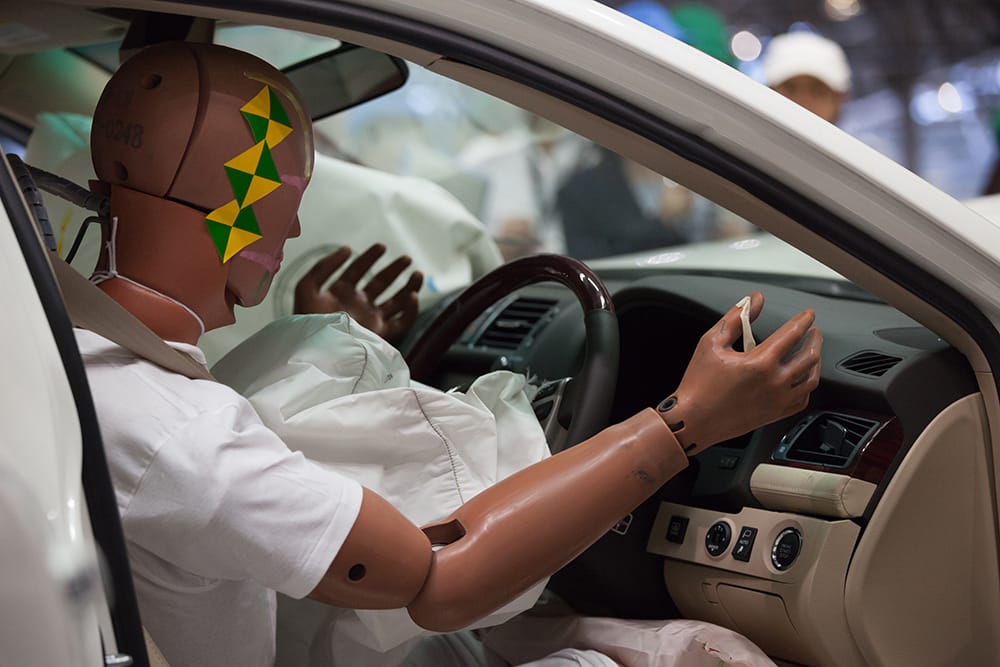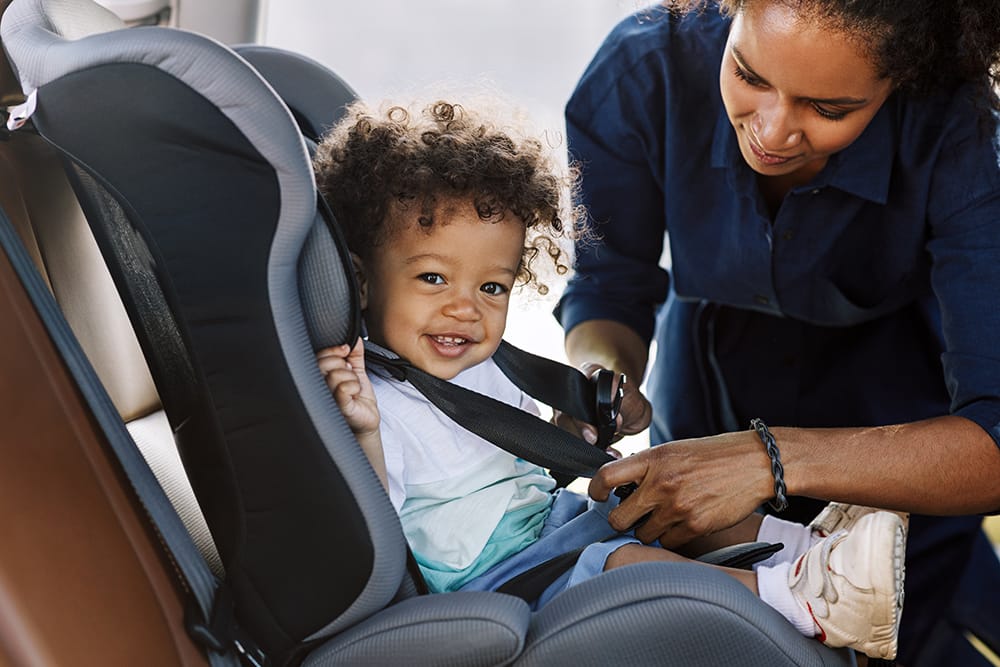Your Guide to Car Safety Features

Each year, there are some 5-7 million car accidents on American roads. From minor fender-benders to devastating crashes and pileups, car accidents pose a serious risk for drivers, passengers, bicyclists, and pedestrians. Thankfully, the number of driver-assistance safety features has grown rapidly as new vehicle makes and models are introduced.
These new car safety features not only protect you and your family during an accident, they also help you avoid an accident in the first place. That’s why it’s so important to understand how these features operate, what they do, and how you can rely on them when it matters most. We’ve compiled a rundown of the car safety features and gear that make driving safer for you – and for all of us.
Car Safety Features for the Open Road
There’s nothing like taking a road trip on a beautiful day with the music on and the windows down, but the open road (where vehicles travel faster and for longer periods of time) can bring its own set of hazards. Many important car safety features have been introduced to make driving on highways and interstates safer.
One of the most popular car safety features is adaptive cruise control, which uses your car’s radar and camera modules to adjust your speed based on the behavior of cars around you. If you get too close too quickly to a car ahead, forward-collision warning sensors will alert you to potential impact. These systems are often coupled with automated emergency braking to bring the car to a stop on your behalf.
Other car safety features are meant to keep you engaged with the road – not texting, dozing, or reaching for something in the back seat. Driver-attention monitoring and lane-departure warning will alert you if you lose focus. Many new vehicles now come equipped with a semi-autonomous driving mode, meant to reduce driver fatigue.
And what could be more irritating than driving around a bend or over a hill at night, only to be confronted with an oncoming car with their high beams or ‘brights’ shining directly at you? Automatic high beams can alternate from low to high beam in an instant. Thermographic cameras on new vehicles also enable night vision and situational awareness when visibility is low, with surrounding obstacles displayed on your dashboard screen.
Car Safety Features for City Driving
City driving comes with a unique set of risks, often due to the proximity between drivers and other people, cars, and hazards. Car safety features have been designed to help drivers cope. Parking sensors and backup cameras prevent those nicks and scratches that often accompany parallel parking or parking within narrow garages. Some cars even boast an active park assist to steer the vehicle into a parking spot on the driver’s behalf.
Blind spot warning and pedestrian detection systems will signal to the driver with light or sound if a bicyclist is moving alongside the car in a shared lane, or if a person is crossing the street ahead. Brake assist applies the brakes when the car is moving too quickly toward an object. Sensors also have been added to the backs of cars for rear cross-traffic alerts, which notify you of an oncoming car when you’re backing out of a crowded parking lot. Some sensors, like traffic-sign recognition cameras, remind drivers when they’re going too fast or are approaching a stop sign.
Safety Features Inside the Car
Of course, the most important car safety features are those that protect the driver in the event of collision, like front and side airbags and the all-important seatbelt. But other safety features have been added inside the car to limit distractions and protect your loved ones. Cell-phone silencing features turn off push notifications on your phone, so you’re not tempted to look down at who might be texting.

For families, automatic door locks mean a rear car door can’t be opened when the car is driving, while rear windows also often only roll down halfway to prevent children and pets from leaning too far out. All vehicles are now required to have the LATCH system, which makes child-seat installation simpler and more secure.
Safety Features for Comfortable Driving
For those people who spend a lot of time driving or who drive through inclement weather, additional car safety features have been designed to improve the comfort and usability of the vehicle no matter what nature and the roads throw at you. Antilock brakes allow the driver to retain steering control while braking, while traction control and electronic stability control improve the connection between the tire and the road to avoid skidding, sliding, or wheel spin.
Tire-pressure monitors help prevent flats or blowouts and enable more efficient fuel consumption. Next-generation technology solutions, like Bluetooth and GPS integration, connect drivers to emergency services, maps, and roadside assistance (like remote starting, unlocking, and location services) no matter where they are on the road.
Keep Your Car (and Yourself!) Safe
It’s important to understand how car safety features work, but it’s just as important to keep them functioning and in good condition. Routine check-ups and preventative maintenance at your local mechanic can help identify any problems with your safety systems, so they function as expected when you need them most. Don’t wait until it’s too late. Make an appointment at Metro Motor today!
Vehicle care information made available by Metro Motor is presented as helpful advice for general maintenance and should not be construed as instructions for at-home vehicle service. Be sure to consult your owner’s manual and a licensed, professional mechanic for diagnostics and repair.
